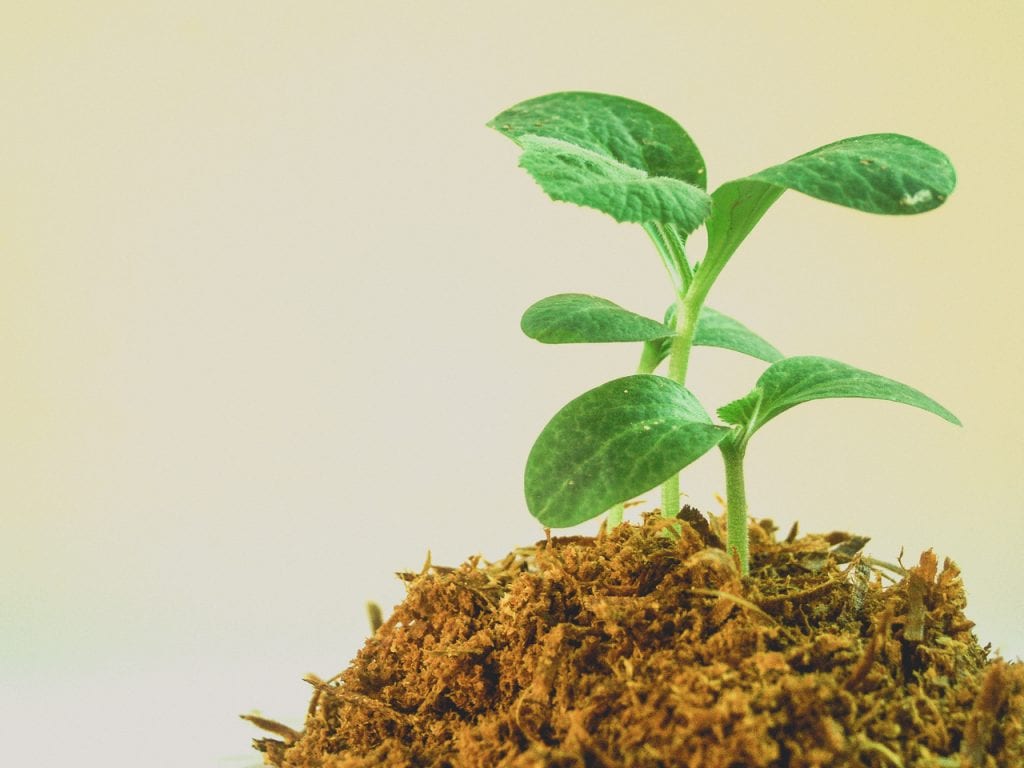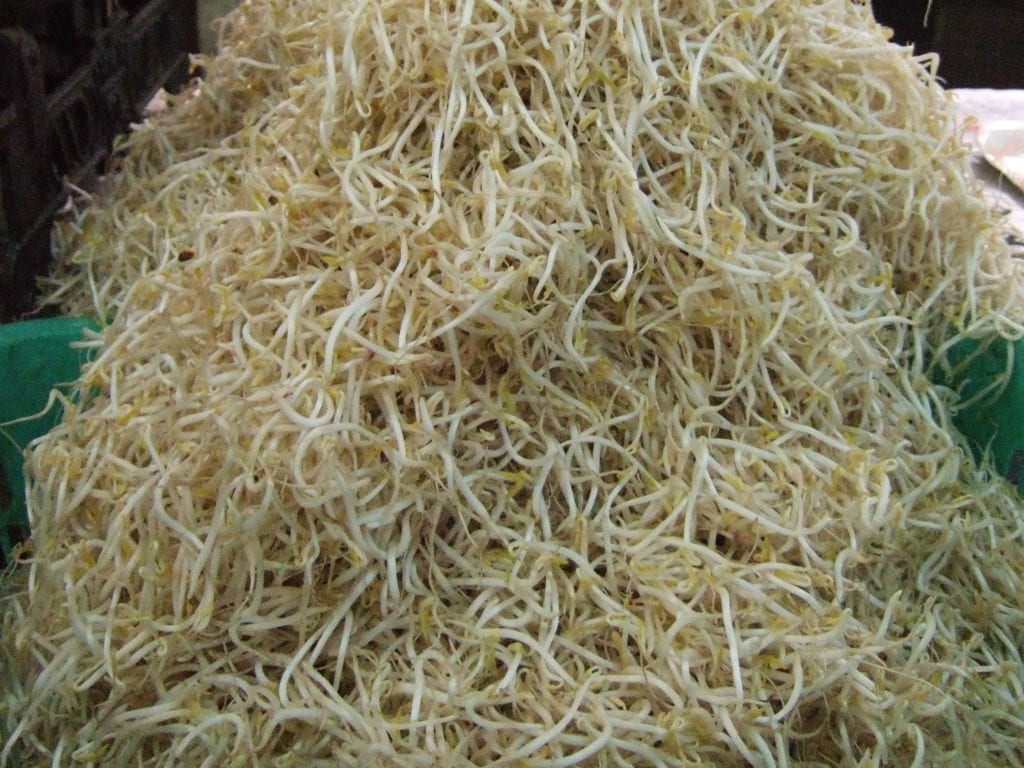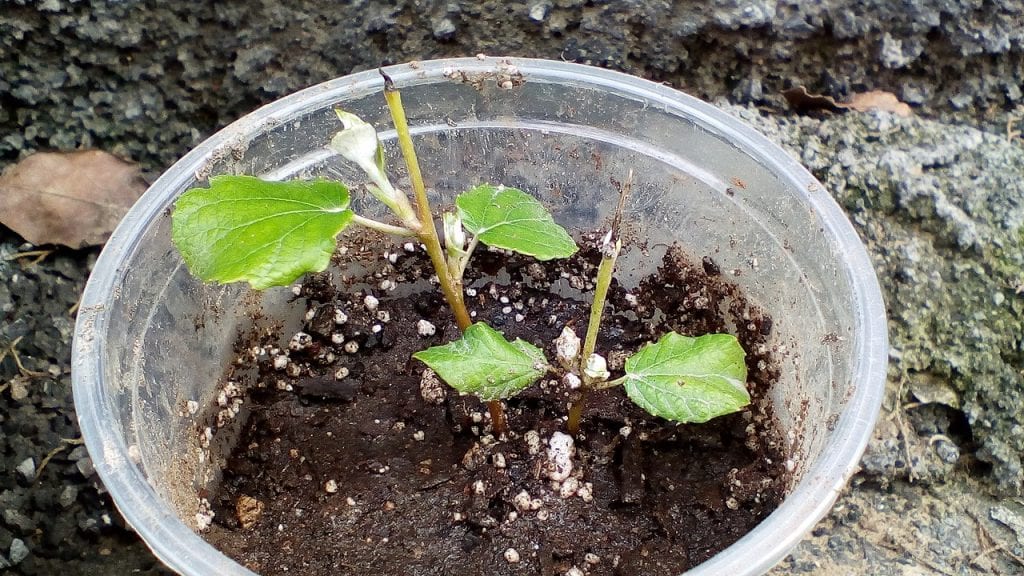
When a seed germinates, crosses the layer of earth and manages, with its small sprout, to go outside, a difficult process begins for it with a single objective: to grow. For this, it needs all the nutrients that the soil can provide, but, many times, potted soils are not rich enough for them and an extra contribution is convenient. AND auxins are a key element.
To stimulate growth we can contribute hormones to our small plants. The hormones that are responsible for growth in vegetables are auxins (from the Greek, to grow). These phytohormones regulate the growth of plants. We can create ecological auxins at home, preparing an irrigation water rich in auxins and for this, we only need 100 grams of lentils.
What are auxins?

Plants are beings that can become very complex, especially with regard to their hormones, or rather, phytohormones. But they are also very useful for humanity, and if we talk about auxins, they are used by farmers and hobbyists with a clear objective: to get their plants to develop a healthy and strong root system, which in turn will translate into plants that they will reach a suitable size according to their genetics and growing conditions.
For this reason, auxins are much more than just any phytohormones: without them, plants would not be what they are. Without them, your cells would not be able to grow and, therefore, they would not be able to either.
Where are they synthesized?
At the apex of the stems is where they are synthesized, specifically in the meristematic regions that are in the area of division and expansion of cells.
What are they used for?
In addition to stimulating growth, it also are very important for flowering and subsequent fruit ripening, as well as to prevent these from falling prematurely.
What do you need to create organic auxins with lentils?

Image - Wikimedia / Sakurai Midori
It is highly recommended to prepare everything that is going to be needed before getting down to work, since this way we avoid having to make possible stops, and incidentally, we also save time. So let's go. You have to see if you have the following:
- Mortar
- Jar
- A liter of water
- 100 grams of lentils
Surely it has not been difficult for you to achieve this, right? And it is that to obtain ecological auxins it is not necessary to complicate much, because with the things that we have at home we will obtain them.
Step by step
Now that it's all on the table it's time to follow this step by step:
- We soak the lentils in a glass of water for 8 hours. After this time, we strain them and reserve the water, as it is already rich in auxins.
- We put the lentils between slightly moistened paper napkins and leave them until they develop about 3 cm of roots.
- We cut the roots and discard the rest.
- We crush the roots in a mortar and immerse them in half a liter of water for 24 hours in a dark place.
- We strain them and add the water to the one reserved at the beginning.
And we already have a compound rich in auxins that, in turn, we will mix with 1 l. of water. The resulting mixture will be our irrigation water that stimulates the growth of the seedlings.
How to stimulate root growth?
Lentils are the most commonly used to create auxins, but they are not the only thing that will stimulate root growth. In fact, there are a few more things that might surprise you:
- Café: you have to boil a handful of coffee (it can be ground) in half a liter of water. It is then strained to discard the remains and allowed to cool before use.
- Cinnamon: add 3 teaspoons of cinnamon to a liter of water, and let it rest overnight.
- Wheat seeds: let them soak in water for 3 hours. After that time, keep that water in the fridge, and crush the seeds with new water. Filter them, and mix these crushed seeds with the water you have in the fridge.
Soya beans would also work for you. - Gravy: Take some willow branches with bark, wash them and let them soak for a month. After that time, put that water in the fridge and boil the branches in new water for a few minutes. Then filter them and let them cool. When it's cold, add the water you have in the fridge and you can use it.
When to use auxins?

Image - Wikimedia / MartínezFlores // Cuttings of the white
Using ecological auxins, whether they are from lentils or other plants, can be of great help when we make cuttings for example, but also when we have planted a plant in the ground, me when taking it out of the pot has broken some roots.
Its use in diseased and / or weak plants is also very interesting, because the more roots they have, the more simple -as long as they start to be used as soon as possible, as soon as the first symptoms appear- it will be for them to recover.
We hope it has been useful to you 🙂.
I find this topic very interesting because I always think that I do not provide enough nutrients in my flowerpot.
Hello anabolufer. Do you have a planter? Follow us then, because we are going to tell a thousand things about him. Always keep in mind that each phase requires a nutrient or, in this case, a hormone. Auxins will stimulate the growth of your seeds in their germination phase and of the first sprouts. Thank you very much for reading us and for your comment. A kiss!
I loved the article. It really is the only one that has so much detail in the process to create the hormones. When I tried to do it, my only drawback was cutting the roots of the lentils. It took too long to pull out too few roots and it was quite difficult. Would it be bad if I mash the lentils with everything and roots before immersing them in the half liter of water?
Hello Hector. I'm glad you liked it. The truth is that I have also seen some articles published later that are based on this one. I'm really glad you turned to the original source. Regarding your query, it is not clear to me about crushing the lentils as well, I have never done it, but being organic matter, they still rot with water and we do not achieve the desired effect. Let the roots grow up to 3 cm. This way you will get more roots and, although it takes your work to cut them, the effect on the plant is worth it. A hug and thanks for following us!
Hello Hector. I'm glad you liked it. The truth is that I have also
seen after published some articles that are based on this one. I
so glad you turned to the original source. As for your
consult, I do not see clear about crushing the lentils as well, I have not
never done, but being organic matter, they still rot with water and
we did not achieve the desired effect. Let the roots grow up to 3 cm.
This way you will get more roots and, although it takes your work to cut them, the effect
on the floor it is worth it. A hug and thanks for following us!
Hello, thanks for the information, I will prove it to have how it turns out, greetings
Hi .. Well, I waited for the roots to come out because the water smelled awful. So I put it all together and it seems that everything is going well
Excellent with these understandable things, anyone learns Thank you for being so helpful Alejandro Napoleón S @ DonGustavo33
Thanks Luis!
Hello Ana Valdés, congratulations on the article, very useful and practical, but I have a question about how long you can use water with natural auxins, that is, I want to know if they do not degrade in an estimated time?
Hi there! I saw on youtube that the lentils c soak ahem: 1 tablespoon d lentils x 4 tbsp d water let it germinate, then liquefy, strain and the milk that we obtain we bind 100ml x 1 1/2 of water and c water the plants, it is kept in a refrigerator d2 at 3 mech.
I am studying biotechnology (still in the first year) and in class they have explained to us that auxins are synthesized (created) in: Apical meristems (main growth gemmas of plants, that is, in the tip), in the seeds and in the leaves young boys. Its functions are four: cell elongation, apical dominance (they control the growth of the tip of the plant and inhibit the growth of the lateral gemmas), root formation and fruit shedding.
Another interesting hormone for plant growth are Gibberelins, which are created or synthesized in roots and apical meristems (plant tips), young leaves and in the seed embryo. Its effects are stem growth and flowering, seed germination and fruit growth.
I hope these modest notes can be of some use.
Hi Piwy.
Thank you very much for your information.
very good article!! is the only one that explains well I hope it helps me for an experimental work! 🙂 thank you
How often is it recommended to do it? and the banana tea how often?
Hello, excuse me, would it work the same with other legumes? Like chickpeas for example?
Uh uh, I did the lentil thing but when the sprouts came out I processed them with the lentil shell. Will it be the same?
Hello Sandra.
Don't worry, it works the same 🙂.
A greeting.
hello, how much auxins should be added to the plants, and how often, thank you
Hello kinti.
You have to add 100 grams for each liter of water, once or twice a week at most.
A greeting.
hello good morning, is there literature that supports that lentils release plant hormones during their germination?
Hello Ana! I would like to make a contribution to your note. Actually Auxins are not nutrients, they are hormones. For this reason, there is no correlation between soil type and amount of Auxins.
regards
Hello, I would like to know if this root stimulant would be useful for an asparagus plantation and how many liters would I need if I have 6000 square meters
Hi Juanfran.
Yes, it would serve you well 🙂 But being such a large field, it may be more convenient for you to irrigate with liquid rooting hormones, or with root stimulants sold in nurseries.
In any case, asparagus are plants that adapt quickly to the ground.
A greeting.
How do I know if what I'm working with are auxins? And how do I know which seeds or plants produce auxins in large quantities?
Hello Cristian.
All plants produce auxins, as it is a vital hormone for growth.
Lentils are used a lot as rooting hormones, as they produce so many. Here it explains how to obtain them.
A greeting.
This Auxins from lentils thus obtained, how long can they be kept in storage without losing their effectiveness?
Thank you